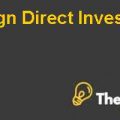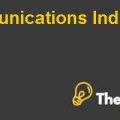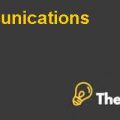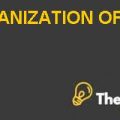HEDGING AT PORSCHE Case Study Solution
Why does Porsche hedge its foreign exchange exposure? Does it make sense, from the perspective of shareholder, for Porsche to hedge? Does it make sense from management's perspective? Are there potential differences in interest between management and shareholders regarding the hedging policy?
The management of Porsche had designed its risk management policy by its experience of nearly going bankrupt in the 1990s. There were a number of reasons due to which Porsche had hedged its foreign exchange exposure. Firstly, Porsche wanted to have ample liquidity and leverage on its balance sheet. Instead of relying on cash loan taken from the banks, the company relied on its own cash and cash equivalent assets due to which it had maintained such liquid assets of around 2 billion Euros. Secondly, Porsche wanted to secure itself in the fluctuations of the exchange rate between the US dollar and the Euro.
The company hedged its financial exposure to secure its profitability against the weakening of the US dollar. This had its roots by the problems faced by the company in the 1990s when the US dollar had weakened and the company was not hedged, which compounded a number of problems for Porsche. Therefore, the management of Porsche wanted to match their dollar revenues with the dollar costs. The management of Porsche did not go down the root of establishing a natural hedge but it took advantage of the financial derivatives and made use of the options to hedge the foreign exposure faced by the company. The options were used by the company to lock into a desired floor with respect to the prevailing exchange rate.
If we look at exhibit 1 in the case, then we can see the upward movement of the exchange rate between US to Euro and thus this means a weakening of the US dollars against the Euro. By locking in with put options with a floor, Porsche would be able to get a minimum amount of the Euros per each US dollar the company earns in America and then these US dollars could be easily converted to Euros at the specified exchange rate. This would mean that Porsche would be secure against the foreign exchange exposure and it could limit the losses that it faced in the 1990s. The hedging strategy had grown rapidly in 2007 and it generated huge profit margins for the company as shown in exhibit 1 in the appendix.
From the perspective of the shareholders, it makes sense that Porsche should hedge its foreign exchange exposure because of the bankruptcy situation that had been faced by the company in 1990s. Therefore, hedging the financial exposure to save the investment of the shareholders and maximizing the wealth of the shareholders is the ultimate objective of Porsche. Thus, this hedging strategy makes sense from the perspective of the shareholders.
From the perspective of the management, the hedging strategy makes little sense, as Porsche had believed that it should be hedging its foreign exchange risk irrespective of the future rate developments the management of Porsche might have. The aim of the board was to avoid the financial trap, as it is never possible to beat the market. However, to a major extent, the hedging of the financial exposure would also be in the long-term interests of the management of Porsche, as it would save the company from huge losses and bankruptcy. Management would be looking for this secure jobs and hefty bonuses, which is only possible if the company grows and performs well even in the volatile times. Thus, we can conclude that the interests of the shareholders and the management are different with respect to the hedging policy of Porsche.
Question 2
How might Porsche's ownership structure influence the hedging strategy pursued by management?
The ownership structure of Porsche could influence the hedging strategy pursued by the management in a number of ways. First, if the majority of the independent directors on the board of Porsche are against this aggressive hedging strategy of Porsche, then the company might have to withdraw its hedging strategy and also probably reduce the hedge ratio. Secondly, it has also been observed in the past that there had been conflicts of interest due to which the company had invested in the stock options of Volkswagen rather than directly buying the stocks of the company..................
This is just a sample partial work. Please place the order on the website to get your own originally done case solution.









